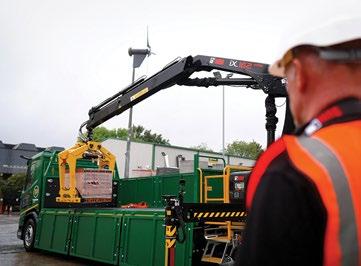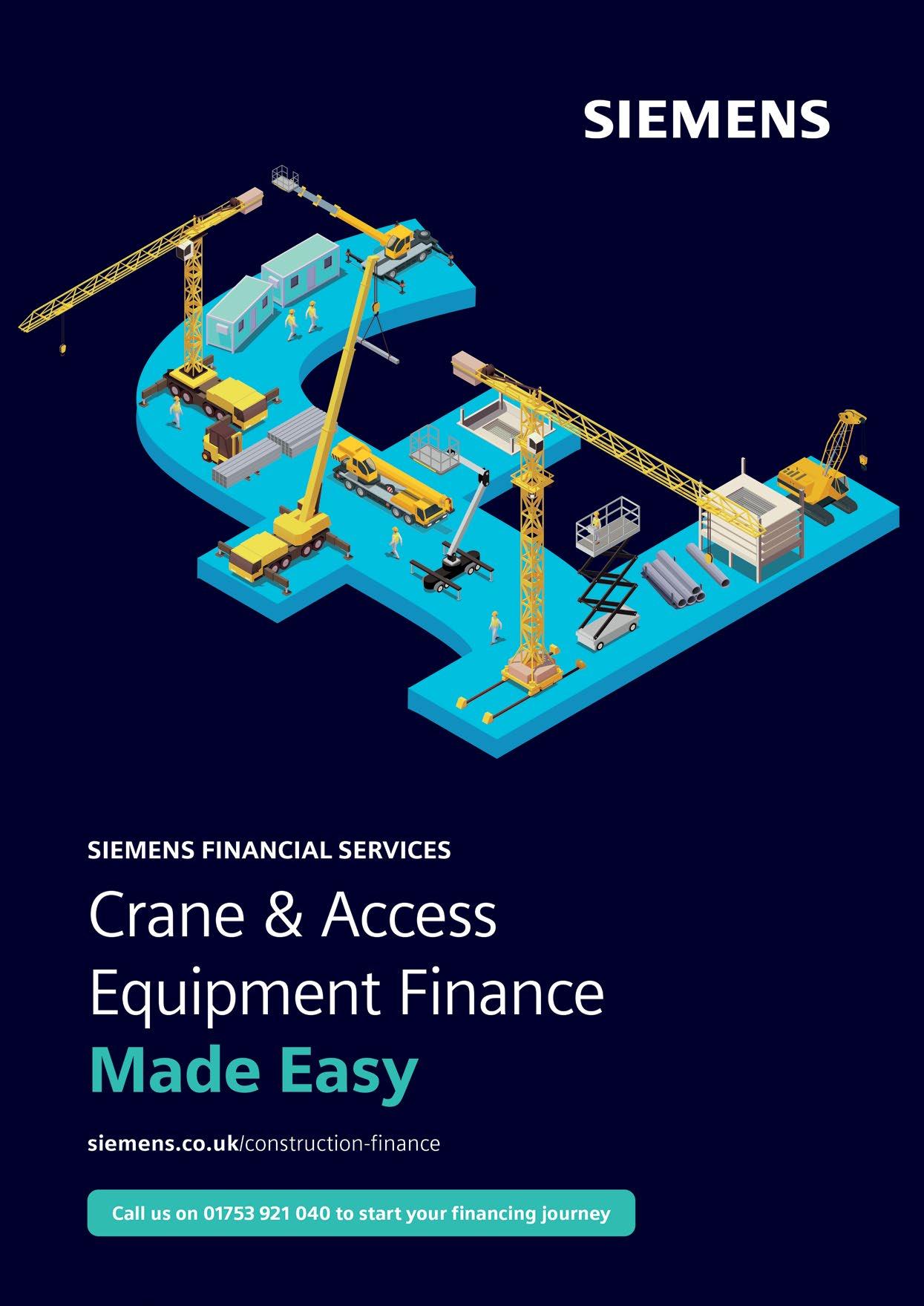
9 minute read
The evolution of remote controls
The evolution of remote controls
When it comes to construction equipment, few machines are as iconic and as varied as the crane. From the towering structures that dominate urban skylines, the rugged mobile machines on major infrastructure projects or the monster crawlers on wind farms to the tiny spider cranes in malls or the knuckle boom unloading a bag of gravel or pallet of bricks, cranes have been increasingly central to industrial progress.
The evolution of crane technology may well have started out with a focus on higher and stronger machines, but for some time now the focus has been shifting towards smarter, more convenient and more versatile machines, as well as being environmentally cleaner. The invention and development of remote controls has, and still is, revolutionising equipment operation, but especially for cranes where they are enhancing safety, precision, and efficiency in ways previously unimaginable.

The early days
The origins of crane-like lifting machines can be traced back to Ancient Greece and 500BC. However, new evidence from architectural historian Alessandro Pierattini suggests that cranes may have been in use 150 years earlier. While there is some debate about the exact timeline of their invention, there appears to be a consensus when it comes to their Greek origins. Initially, it is believed that ramps were used to move materials upwards as with the great pyramids of Egypt, until the invention of the block and tackle, powered by human effort which allowed a single person to lift a load several times their own weight. The winch followed closely behind and with the Romans, advanced practicality of the technology with the creation of the ‘Trispastos,’ a crane featuring a single beam, a rope, three pulleys and a simple winch.
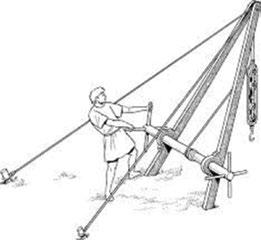
The ‘treadwheel’ crane followed, and was used extensively in harbours, mines and on major construction sites across Europe. The industrial revolution brought about another significant advance with the invention of a hydraulic cylinder powered lifting mechanism by William Armstrong in 1838. He modified one of the cranes on the quayside in Newcastle, England by adding his hydraulic lifting mechanism and it was so successful that he quickly supplied three more and gave up his day job to manufacture hydraulic cranes.
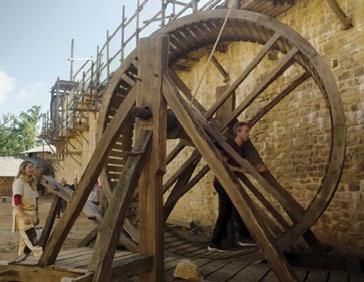
In the early days simply operating a crane was a skilled, physically demanding and dangerous job. You only need to go back 70 years or so to a time when that was still the case, with operators often working in close proximity to the large mechanical gearing, while using a combination of long levers and foot pedals to control a range of band brakes and clutches while dealing with the throttle.
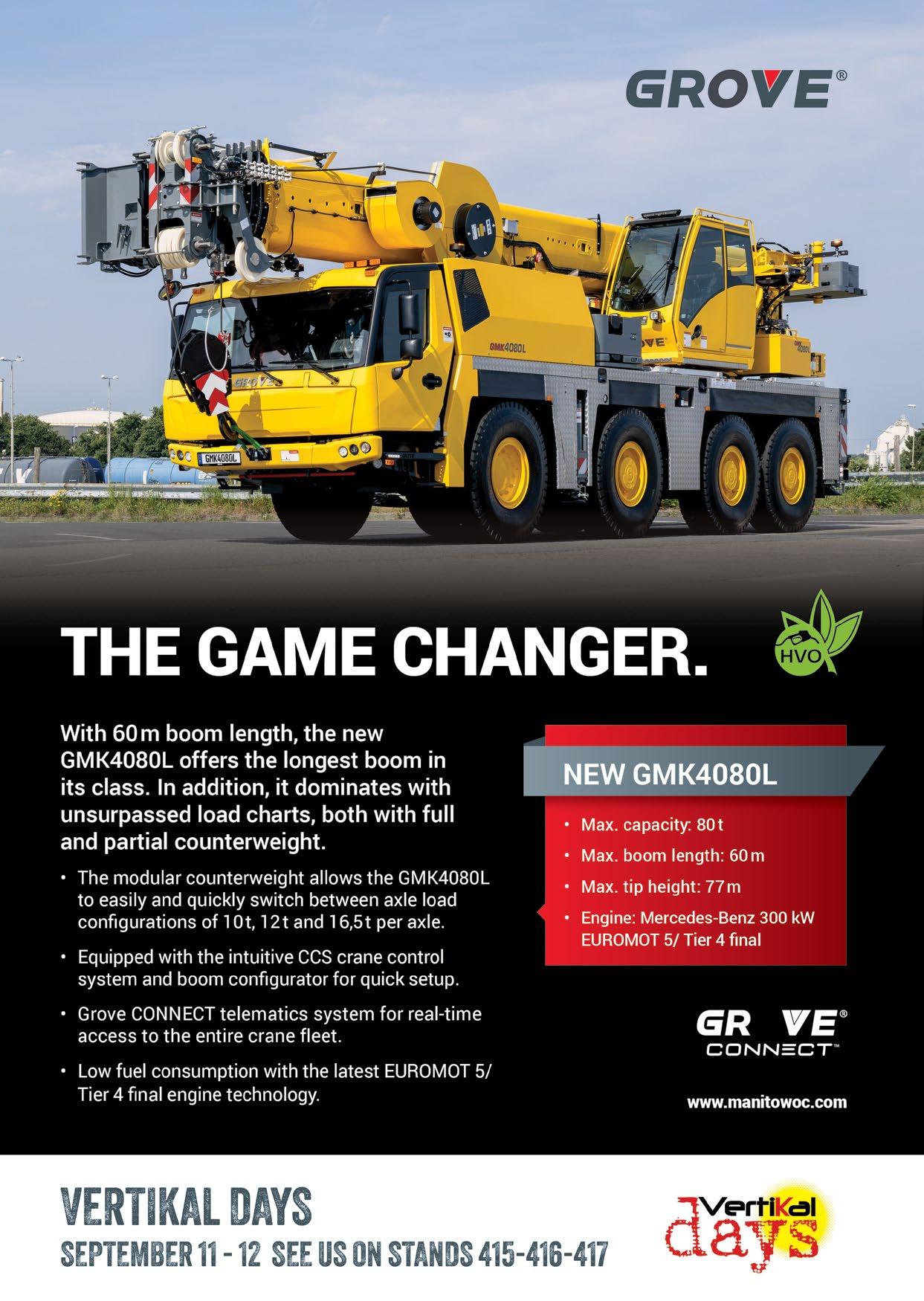
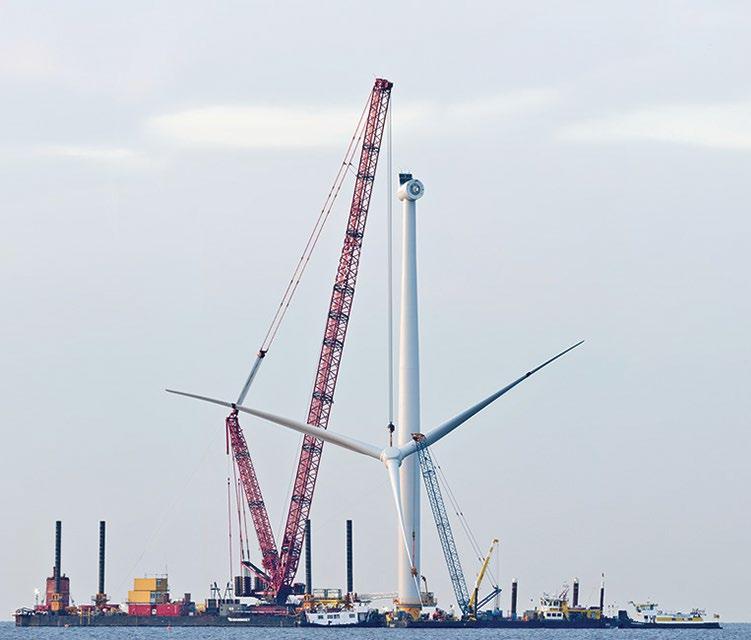
Crane controls rapidly became more sophisticated and easier to operate as hydraulics took over from mechanical systems. Electric controls came into use fairly early on with industrial overhead and tower cranes using pendant suspended push button remote controllers. As with electric cars, electric controls were nothing new. In the 1930s, if not before, Coles employed electric controls on its mobile diesel electric cranes. However, the more recent arrival of electronic controls and sensors, opened up a wide range of additional development potential.
Wireless Technology
Wireless remote controls made their first appearance in the crane industry in the late 1990’s - the Telemotive RC-E3600 was an early example. Manufactured in Chicago, USA like many other early remote controls it utilised radio frequency (RF) technology which is still the case with the majority of remote controls today, allowing operators to control a crane from a distance.
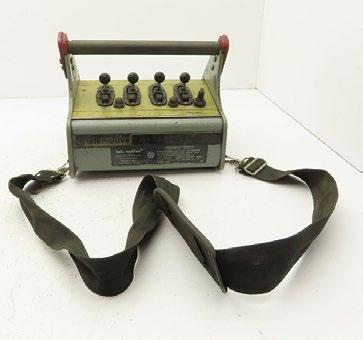
The benefit of controlling a crane remotely opens up all manner of opportunities. Not only can the operator locate themselves well away from a hazardous work zone, but they are free to move around the equipment and work area to gain the best possible view while manoeuvring the load or the machine with incredible precision. The first generation of RF remote controls faced challenges such as signal interference, a limited range and security issues, which still persist to some extent today. Despite these issues, they paved the way for more advanced technologies that are now coming on stream.

Digital Transformation
The digital revolution has brought significant advancements in remote control technology. Modern remote controls for cranes are now equipped with sophisticated features that were unthinkable just a few decades ago helped by the miniaturisation of components, improvements in wireless communication, and the integration of sophisticated software.
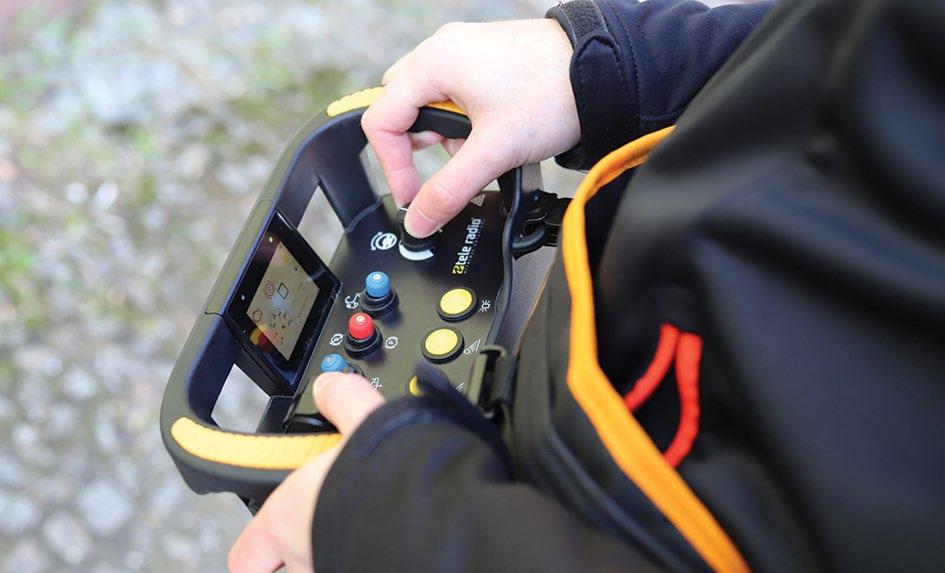
Radio frequency & infrared
RF controllers have evolved significantly over the years and now operate on multiple frequencies with encryption for security, while automatically switching frequencies to maintain a stable connection. Despite these advancements, they remain vulnerable to attacks, as anyone within range with the necessary knowledge can access the RF waves. In contrast, infrared (IR) controls, though less common, are used in specific applications where line of sight operation is beneficial. IR systems are highly precise but limited by obstacles blocking the signal, making them ideal in some applications such as work in or near environments such as hospitals where RF interference is a concern and meticulous accuracy is required.
Bluetooth and Wi-Fi
The integration of Bluetooth and Wi-Fi technologies has expanded the capabilities of remote controls. Operators can now use smartphones and tablets to control the equipment with apps providing intuitive interfaces and real time data. This means that operators can control the machine from virtually anywhere, provided they have an internet connection. The use of mobile apps also allows for the integration of additional features such as GPS tracking, load monitoring and maintenance alerts.
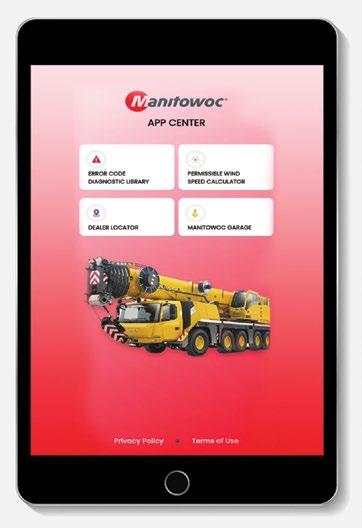
feedback systems
Feedback systems are very useful in providing information that helps with safety, efficiency and precision during a lift. Modern remote controls, often include haptic feedback and real time information about the load, boom angle, and other critical parameters. These features can alert operators of an impending overload situation, or if the machine is reaching its operational limits and therefore have the opportunity to prevent an incident before it occurs.

Semi & autonomous operations
The latest advancements in remote control technology involves artificial intelligence (AI) and machine learning, enabling semi-autonomous operations. The system uses real time data analysis and past operations to optimise performance, enhancing efficiency and safety, while also allowing the remote control and monitoring of the equipment. Several Potain tower cranes and Liebherr mobile cranes now use AI to assist in load positioning, safety monitoring, and performing lifts with minimal human intervention.
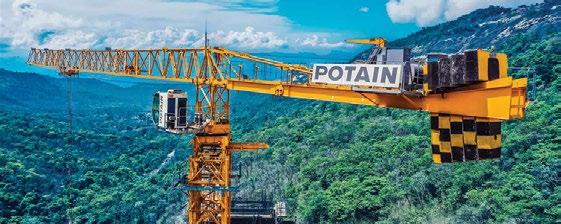
Safety and efficiency
The primary driver behind remote control technology for cranes is safety. By distancing operators from heavy loads and moving parts, the risk of accidents is significantly reduced. Modern remote controls often include emergency stop functions and fail safes to halt operations if issues arise.
Looking ahead
The future of crane remote controls will be shaped by advancements in AI and robotics, leading to fully autonomous cranes that provide additional safety and efficiency. However, this progress also presents other challenges. Remote operation may eventually eliminate the need for technicians and operators on the ground or at all, fundamentally changing the industry.
AI and machine learning
AI and machine learning are becoming vital in crane operations. UK based Capja uses AI to optimise crane performance, predict maintenance, and enhance safety. Its system allows owners or operators to scan a QR code on a machine to draft risk assessments, monitor fleet depreciation, predict equipment failures, and assist with route planning, including permits, while suggesting more efficient routes based on past data.

Capja co-founder Josh Wallman says: “The capabilities of AI are unlimited, and this is what we’re investigating. It will utilise past risk assessments and method statements that users have submitted and then adapt and mould it to their particular situation. For example, if they are down a narrow street in London, it might have a look at similar projects they have done in similar situations and predict what sort of information is needed and what issues to consider.”

Robotics and automation
Robotics and automation are increasingly integral to the crane industry, enabling autonomous cranes to perform repetitive tasks with precision, especially in hazardous environments like nuclear plants. This minimises employee risk and boosts efficiency. Hiab offers HiVision for remote crane control via virtual reality and HiConnect, which provides real time data on performance, safety, and maintenance, allowing companies to automate tasks and optimise operations.
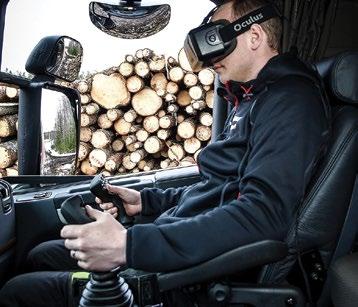
Security concerns
While advancements are impressive, they bring challenges, particularly in security. The increasing sophistication and interconnectivity of these systems make them more vulnerable to cyberattacks, which could lead to accidents, injuries and lock outs, with significant financial losses. A 2019 Trend Micro report highlighted that RF remote controllers, commonly used in industrial applications, have become a weak link due to their long life spans, high replacement costs, and cumbersome patching processes. To enhance security, solutions such as Virtual Fencing and password protected Bluetooth and Wi-Fi systems are recommended.

Reliability and training
The reliability of remote control systems is also a critical consideration. System failures can have serious consequences, making it essential to build redundancy into these systems through backup controls and fail safes, ensuring that operations can continue safely even if a primary system fails. Regular maintenance and testing are also crucial to maintaining reliability.
As these systems become more advanced, operators must also adapt, requiring training not only in basic crane operation but in the use of sophisticated remote control technology, not only to learn how to use it, but also to gain the most benefit. ■
